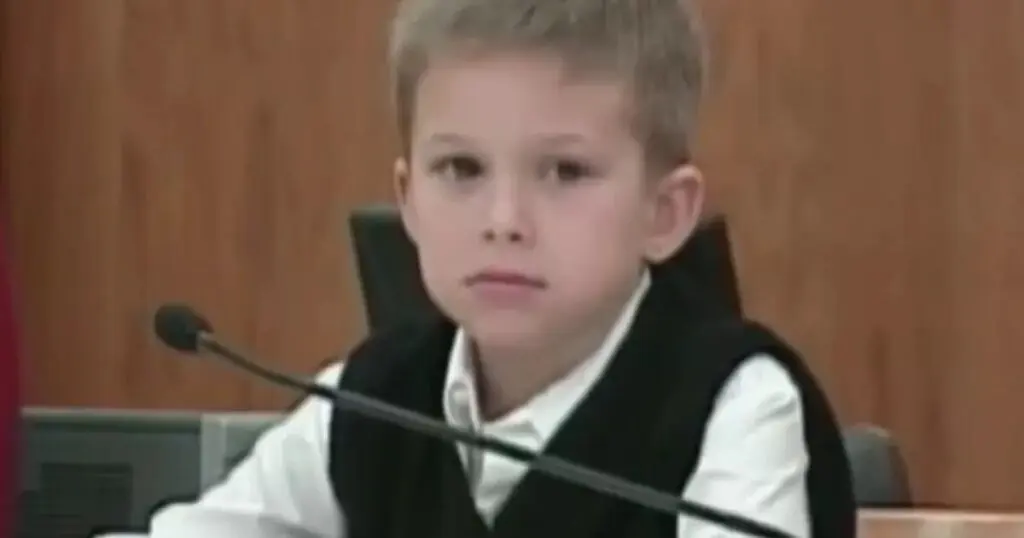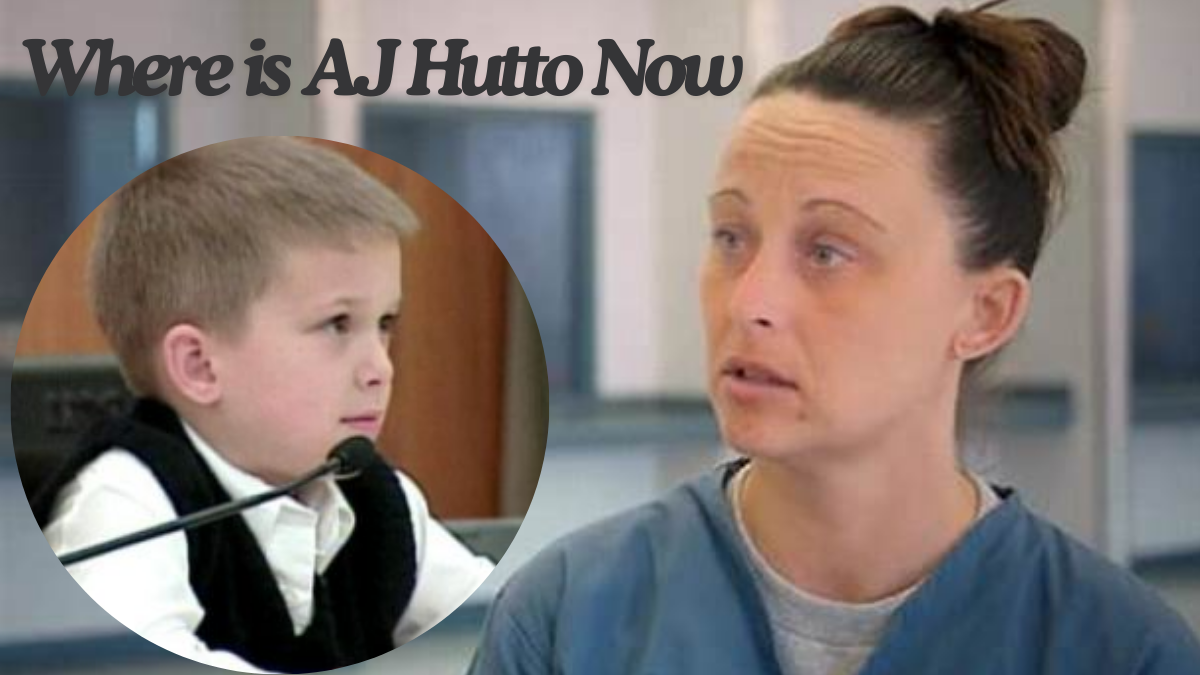What becomes of a child who witnesses a tragedy that will forever alter the course of their life? The story of A.J. Hutto offers a compelling, if heartbreaking, answer, a tale of unimaginable loss, public scrutiny, and a quiet, determined resilience.
On August 8, 2007, the idyllic tranquility of Esto, Florida, was shattered. A 911 call, placed by Amanda E. Lewis, reported a harrowing discovery: her seven-year-old daughter, Adrianna Hutto, was found unresponsive in the family's swimming pool. This tragedy, however, was only the beginning of a far more complex and devastating narrative, one that would thrust a young boy into the harsh glare of the public eye. The subsequent trial, held in February 2008, would hinge on the testimony of a single witness: Adrianna's six-year-old brother, A.J.
The events of that day unfolded with a cruel swiftness. Amanda Lewiss frantic call to emergency services painted a picture of a tragic accident. However, the investigation that followed, coupled with the heartbreaking account of A.J., painted a far different picture. The young boy, thrust into the role of a key witness, delivered testimony that would change the course of his mothers life forever. During the trial, A.J. took the witness stand, taking an oath and recounting the events he witnessed. His account would ultimately lead to Amanda Lewis's conviction.
The trial itself was a somber affair, filled with heart-wrenching evidence and emotional testimony. The prosecution meticulously built its case, presenting evidence that challenged the initial narrative of an accidental drowning. But it was the testimony of A.J., then barely seven years old, that became the emotional cornerstone of the proceedings. The boy, initially unaware of his mother's presence in the courtroom, broke down in tears upon realizing her proximity. His raw, unfiltered account of the events, recounted with the simple honesty of a child, moved many to tears.
The details of the tragedy, as recounted by A.J., painted a grim portrait of the events of that fateful day. Though the specifics remain a painful memory, the core of his testimony was undeniably clear: he had witnessed his mother, Amanda Lewis, drown his sister in their family pool. This testimony, coupled with other pieces of evidence, was instrumental in securing Amanda Lewis's conviction. She was found guilty and sentenced to life imprisonment without the possibility of parole.
The aftermath of the trial was a whirlwind of legal proceedings, media attention, and personal upheaval. A.J., having endured the unimaginable trauma of witnessing his sisters death and testifying against his mother, was placed into the care of a new family. The state of Florida, recognizing the sensitivity of the situation, made the decision to initiate a closed adoption, shielding the boy from further exposure to the legal and familial complications. A.J.s mother, on the other hand, was left with the crushing knowledge of her crimes and the devastating loss of her children and freedom.
The years that followed were a testament to A.J.'s resilience. He was raised by a family that had chosen to focus on his well-being. Their commitment to his safety and privacy has allowed him to heal and begin to rebuild his life. In recent years, A.J., now in his early twenties, has chosen to break his silence and share his story with the public, on the condition that his current identity remain concealed. His decision to open up, after so many years, offers a glimpse into the emotional and psychological toll of the events he experienced and, in so many ways, is a testament to his enduring strength.
In a world that often rushes to judgment and sensationalism, A.J.'s story serves as a reminder of the lasting impacts of trauma on a child. His decision to speak, even partially, highlights the importance of the individual's journey from victim to survivor.
The circumstances surrounding Adrianna Hutto's death and the subsequent trial and adoption are complex and sensitive, involving both the accused and those caught in the crossfire of grief, guilt, and legal proceedings. The case has left an indelible mark on those involved, prompting reflection on themes of family, trauma, and justice. A.J.'s story provides a poignant reminder of the lasting effects of grief and the resilience of the human spirit.
| Bio Data | Details |
|---|---|
| Full Name | A.J. Hutto (Identity protected in recent publications) |
| Date of Birth | Likely 2001 (based on age at the time of the events) |
| Age (as of 2024) | Early Twenties |
| Residence | Unknown (Identity protected) |
| Education | Likely attended school after the events and is now believed to be studying at a University |
| Family | Sister: Adrianna Hutto (deceased), Mother: Amanda E. Lewis (incarcerated) |
| Current Family | Lives with a new family, through a closed adoption. |
| Known for | Witnessing the death of his sister, testifying in the trial of his mother, and his resilience. |
| Legal Involvement | Key witness in the case against his mother, Amanda E. Lewis, in February 2008. |
| Media Appearance | Has spoken out about his experience with MailOnline, under the condition of anonymity. |
| Current Activities | Likely studying and has kept a low profile to maintain anonymity |
The tragedy of Adrianna Hutto's death occurred on August 8, 2007, in Esto, Florida. The subsequent legal proceedings and the emotional toll on the individuals involved, particularly A.J., have been extensively documented. These events serve as a reminder of the importance of seeking justice, the enduring power of a child's testimony, and the complexities of family dynamics in the face of profound loss.
The tragic events of that summer day in Florida and the following trial were highly publicised events. A.J. Hutto's testimony played a pivotal role in the conviction of his mother, Amanda Lewis, and brought the case to the attention of the world.
Despite the pain and trauma, A.J. has found the strength to rebuild his life. He has chosen to live outside of the public spotlight, focusing on his studies and personal growth. His story is a testament to the resilience of the human spirit.
The adoption process, which placed A.J. with a new family, has allowed him to heal and build a life of normalcy away from the public glare. The closed nature of the adoption protects his privacy, safeguarding him from the media scrutiny.
When A.J. took the witness stand in court, he was still a young child. Despite his youthful age, A.J. showed remarkable bravery and was able to recount his account of the events that had taken place in their family's pool, and this eventually became the most crucial factor in determining his mother's fate.
The tragic narrative of Adrianna Hutto, the ensuing legal battle, and the impact on A.J. continues to be a source of sorrow and a reminder of the impact of the events of that fateful day. It also highlights the complexities of the legal process and the lasting consequences of trauma.
The story of A.J. Hutto also highlights the critical role of family in helping a child navigate the complexities of grief and legal battles. His ability to testify, and later rebuild his life, shows the value of support and guidance during times of immense pressure. The care and commitment of his adoptive family ensured his emotional and physical safety during one of the most difficult periods in his life.
The closed adoption of A.J. was an important part of his path to recovery. The choice to protect his identity and give him the stability he needed was crucial to the future of his life. The closure of his adoption was a thoughtful consideration made to shield him from media scrutiny and keep him safe.
The case underscores the need for comprehensive support services for children who become involved in judicial matters. It is critical that children receive expert psychological assistance in managing the emotional and mental effects of such traumatic experiences. A.J.s experience is a reminder of the significance of protecting the rights of children and making sure that their well-being comes first.
In the end, A.J.s ability to speak about his experiences, even in an anonymous manner, is an act of bravery. By doing so, he not only shares his story, but also reminds others of the strength of the human spirit and the capacity to live in the wake of tragedy.
In the wake of such a tragedy, many people are naturally curious about the circumstances surrounding Adrianna's death and the present situation of A.J. Hutto. With the passage of time, questions about his experiences and current status grow even more important.


